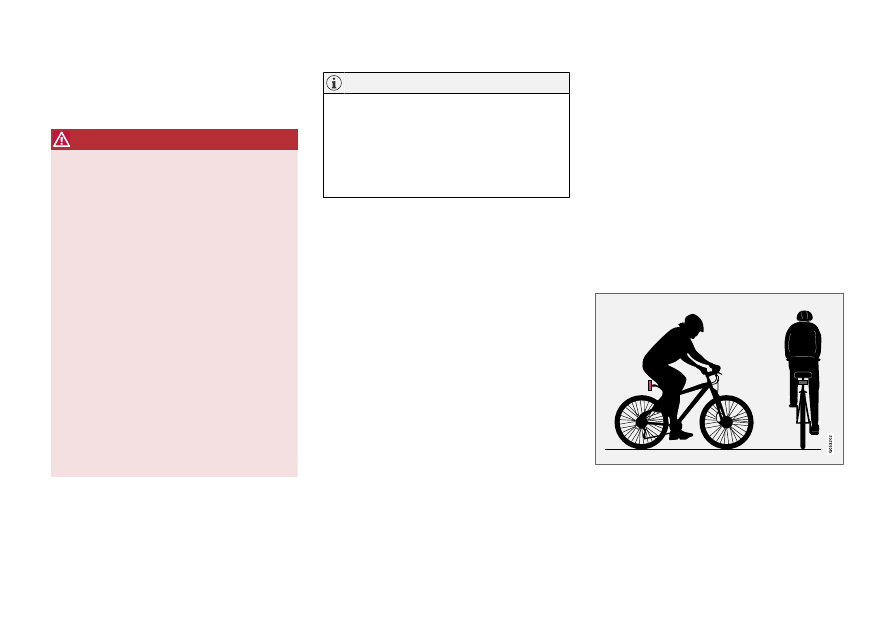Volvo S90 (2019 year). Manual - part 20

DRIVER SUPPORT
}}
337
The
Late
warning distance setting should there-
fore only be used in exceptional cases, such as
when a more dynamic driving style is preferred.
WARNING
•
No automatic system can guarantee
100% correct function in all situations.
You should therefore never test use of
City Safety in the direction of people, ani-
mals or vehicles – this could lead to
severe damage, serious personal injury or
even death.
•
City Safety warns the driver if there is a
risk of collision, but the function cannot
reduce the driver's reaction time.
•
Even if the warning distance has been set
to
Early
, warnings may be perceived as
late in certain situations – e.g. when there
are large speed differences or if the vehi-
cle ahead suddenly brakes heavily.
•
With the warning distance set to
Early
,
warnings come further in advance. This
may cause the warnings to come more
frequently than with warning distance
Normal
, but is recommended since it can
make City Safety more effective.
The warning with direction indicators for Rear
Collision Warning is deactivated if the colli-
sion warning distance in the City Safety func-
tion is set to the lowest level "
Late
".
The seat belt tensioning and braking func-
tions remain active.
Related information
•
Detecting obstacles with City Safety
City Safety can help detect vehicles, cyclists,
large animals and pedestrians.
Vehicles
City Safety detects most types of vehicles that
are either stationary, moving in the same direc-
tion as your vehicle or those described in “City
Safety in crossing traffic” and City Safety braking
for oncoming vehicles”.
For City Safety to be able to detect a vehicle in
the dark, its headlights and taillights must be on
and clearly visible.
Cyclists
Optimal examples of what City Safety would interpret to
be a cyclist: clear body and bicycle shapes.
For optimal performance, the system's function
for cyclist detection needs the clearest possible
information about the contours of the bicycle and